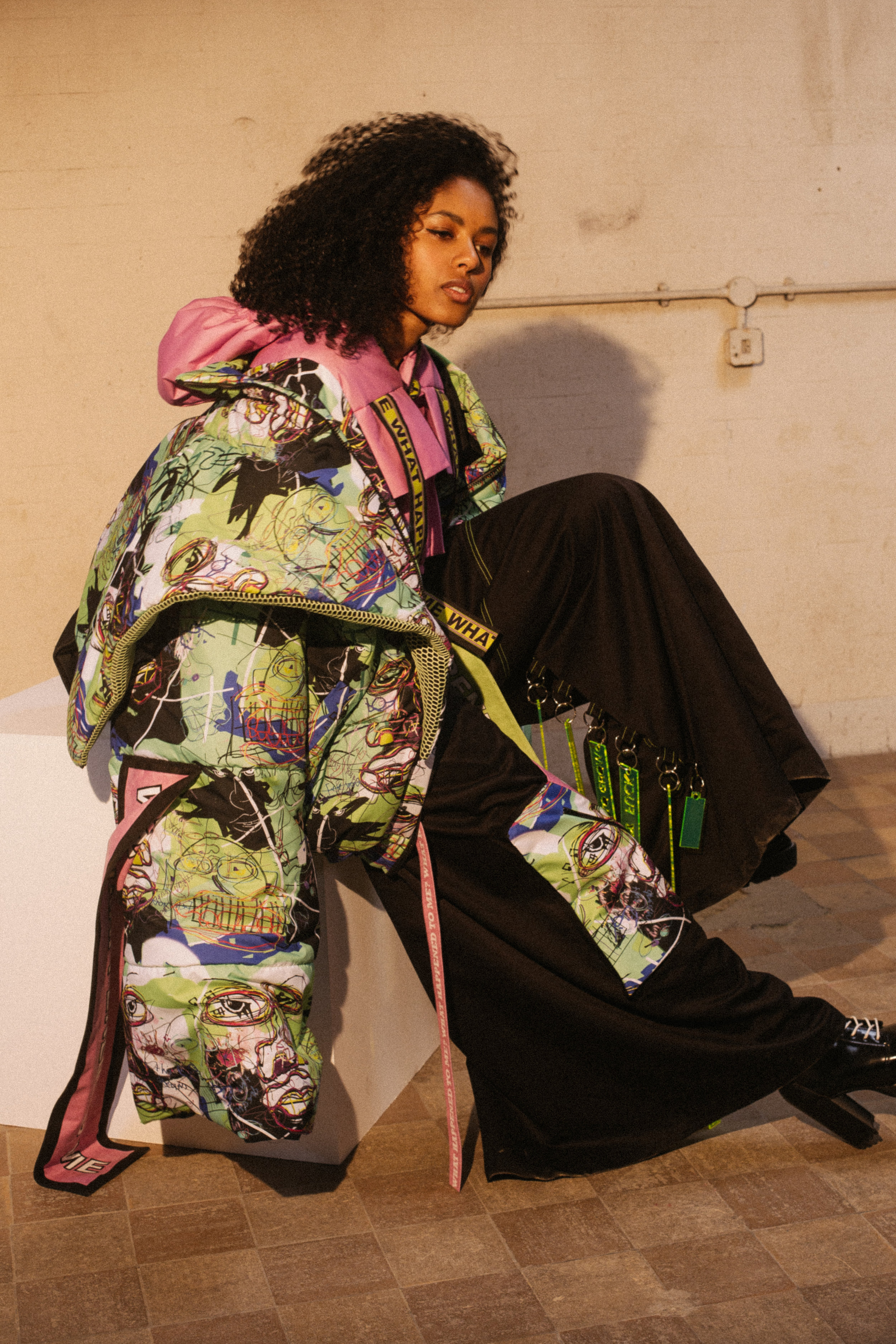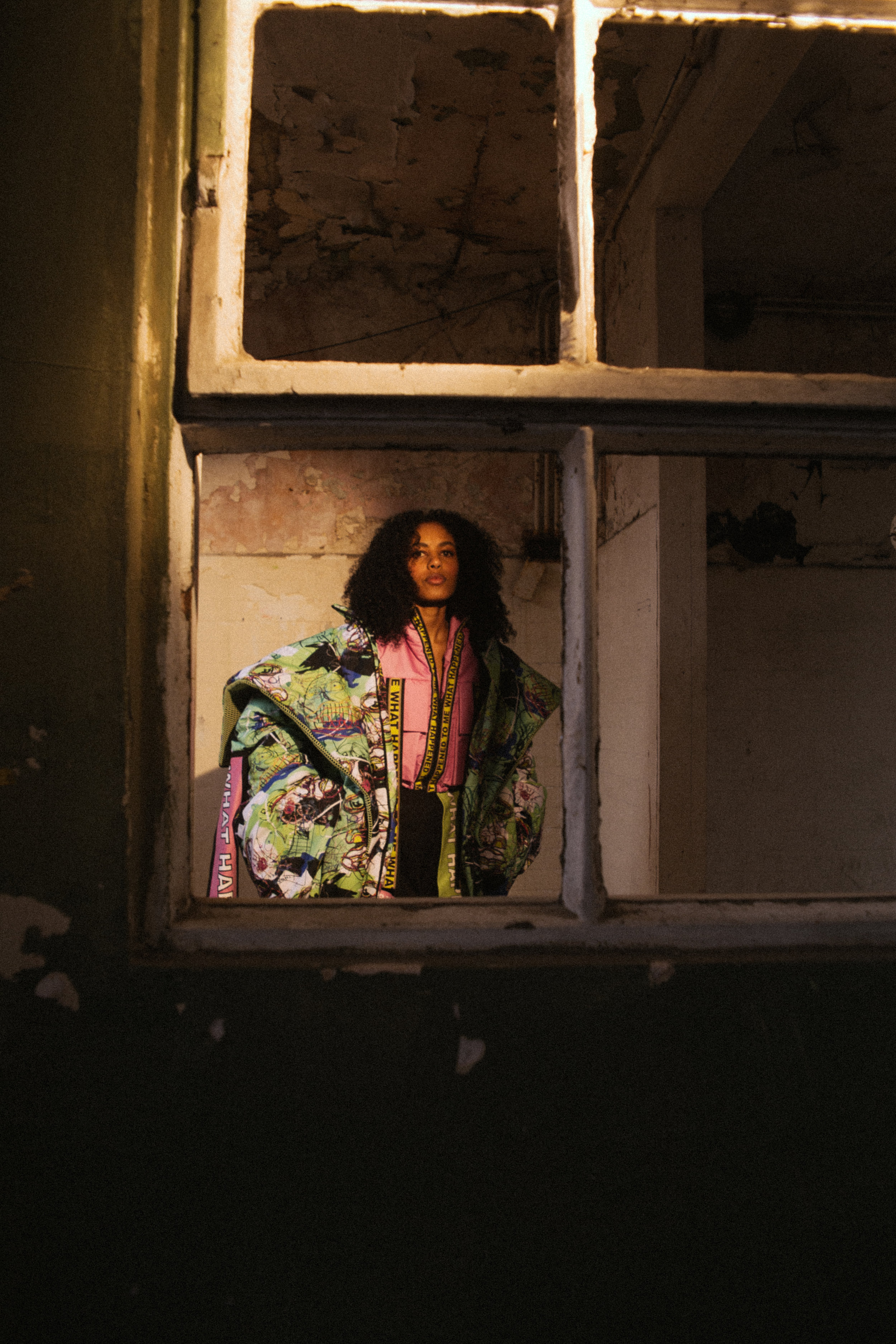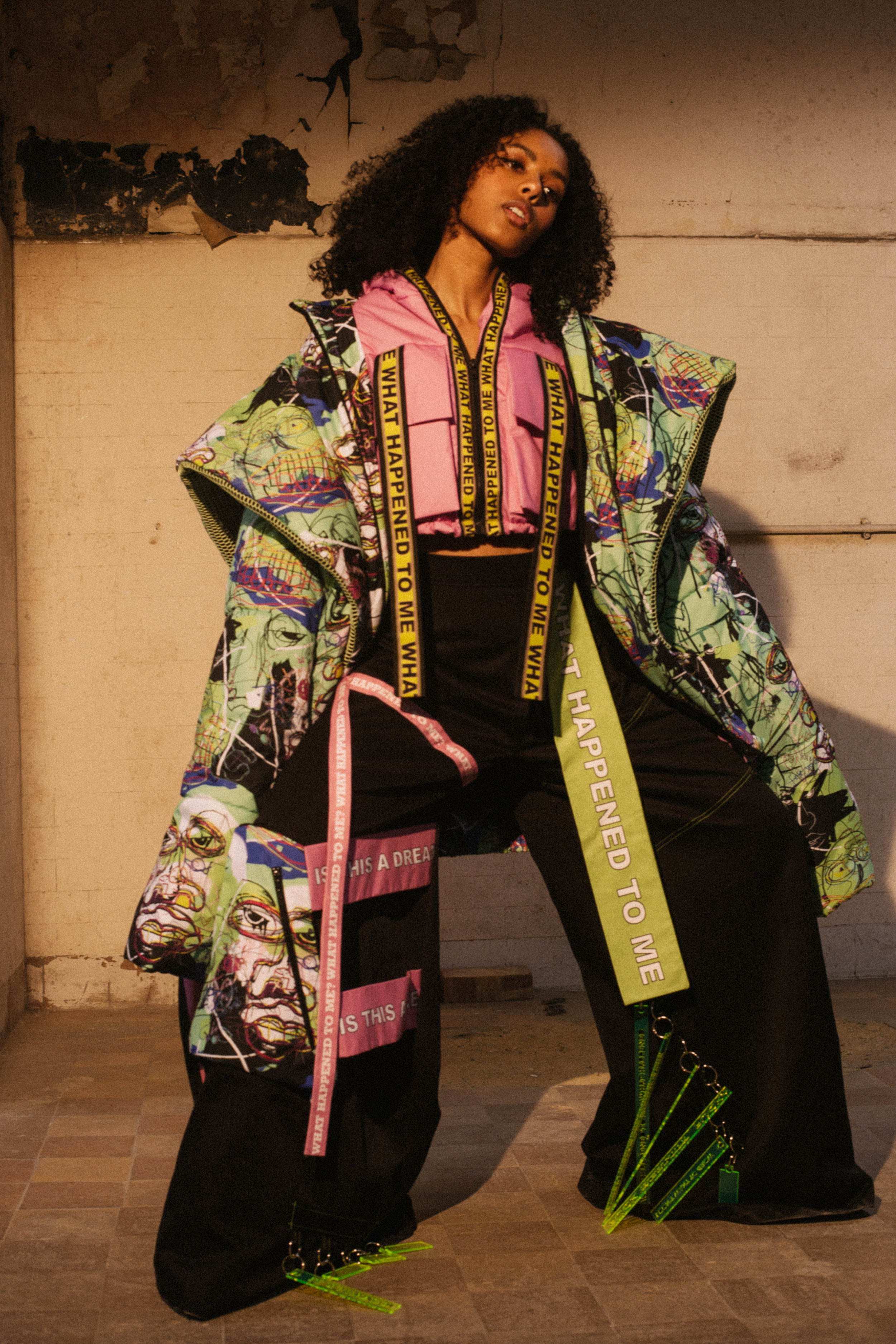It’s Fashion Revolution Week, and what better way to celebrate by sharing with you another one of our influencer interviews with Jade Pearl, the model, artist and influencer who joined us at the official GFW19 photoshoot in Shoreditch’s Truman Brewery. Jade is a former textile design student who has gone on to become a multi-hyphenate creative who incorporates recycled materials into her art. Our Digital Editor Megan Doyle sat down with Jade to discuss her thoughts on sustainability education, how being environmentally conscious is a lifestyle, not a trend, and her advice for students finishing their degrees.
Photo by Claire Younger
Megan Doyle: Thanks for joining us today at the official GFW19 photoshoot! Have you enjoyed the experience?
Jade Pearl: It is amazing to be able to model for students,I wish I had the opportunity to do something like this when I was a student! I’m glad I could be part of it. It’s been interesting to see all the different design and all the creativity — the whole experience was very inspirational for me.
MD: You’ve taken on so many different project in a variety of creative sectors— from modelling to illustration and content creation through your own social platforms. Does this multi-hyphenate approach to a career come naturally to you?
JP: It is very natural for me to do many different things, so I guess I could say it was always part of the plan to be involved in various projects. I always wanted to model, and I wanted to go to university. I’ve been just signed to established agency; they manage my influencer and artistic activity. I would like to continue working on my brand and illustrations, do more modelling, and definitely focus more on art direction of my brand, but that’s looking quite far in the future!
MD: I read that you actually studied textile design at university, and that sustainability was a big focus of your final collection. There’s obviously been huge momentum around the sustainability conversation at the moment — how are you continuing to be part of that conversation through your other projects?
JP: This is not just a movement for me — as a designer, as a person, as an earthling — I’m always considerate about the environment. I’m treating it as a lifestyle, which is not easy, but just by being conscious and wanting to learn, we can all achieve so much. I have so many reusable packagings in my house, like water bottles, coffee mugs etc, it’s really important for me.
Every time I need to buy something that’s packaged with plastic or any other type of single-use cover, I then use it in my art or designs, or try to incorporate it in my life somehow, so it’s not going to be wasted. Living sustainable is very hard, especially in our western society, but by changing one habit at the time it all seems more achievable.
Photo by Claire Younger
Photo by Jade Berry
MD: Incorporating recycled materials into your art must take a lot of experimentation and trial-and-error. Is it important for you to put aside time just for creative experimentation?
JP: I used to have a lot more time for it at university, as you can imagine. Now however, if I’m illustrating something and I have different materials lying around me, I’m going to use them and see how it works. I don’t have a specific slot in my timetable for experimentation; I guess a lot of my processes are experimental.
Sometimes things don’t work out the way I want, but we all learn from mistakes. While at university I once made biodegradable plastic, which was so amazing. I then print-screened it on one of the garments. I’m not very much of a scientist, but I really enjoy experimentation and creating new ways of doing things. I’m still hoping to actually come up with environmentally friendly plastic solution. I haven’t found the right recipe yet.
MD: There’s still huge disparity between the rapid growth of the sustainable and ethical fashion movement and sustainability education, forcing students to do their own research. Do you think it’s something that needs to change within the education system?
JP: Yes, I do. I had to do all my research myself because the curriculum wasn’t not covering different processes or materials we could be using. I was driven by my passion to put all my effort into designing sustainable and ethical collection, but not everyone cares so much. I think if it was mentioned during classes that sustainability is an option, more people would consider it, rather that treat it as something optional and periphery.
“It is a hard industry to break into, but there are so many different projects you can create or get involved in where creativity is very much celebrated.”
MD: Having been in their shoes relatively recently, what advice would you give to any students that currently coming to the end of their time at university, and are looking to begin the first steps in their career?
JP: To be honest, it is terrifying. I was really scared after graduation, I didn’t know what do to, so I just started working. I would get any job, just so I can earn money. Now when I look back, I think it was a mistake and earning money shouldn’t always be on the first place. I wish valued my creativity more and while working to pay bills, also set times in my timetable for creative activities.
You should always prioritise your talent and creativity. Even if you have been working in non-creative sector, your creative craving will catch up with you and then you realise you wish you did something different with your life. It will be hard, but you can’t give up. It is a hard industry to break into, but there are so many different projects you can create or get involved in where creativity is very much celebrated.








